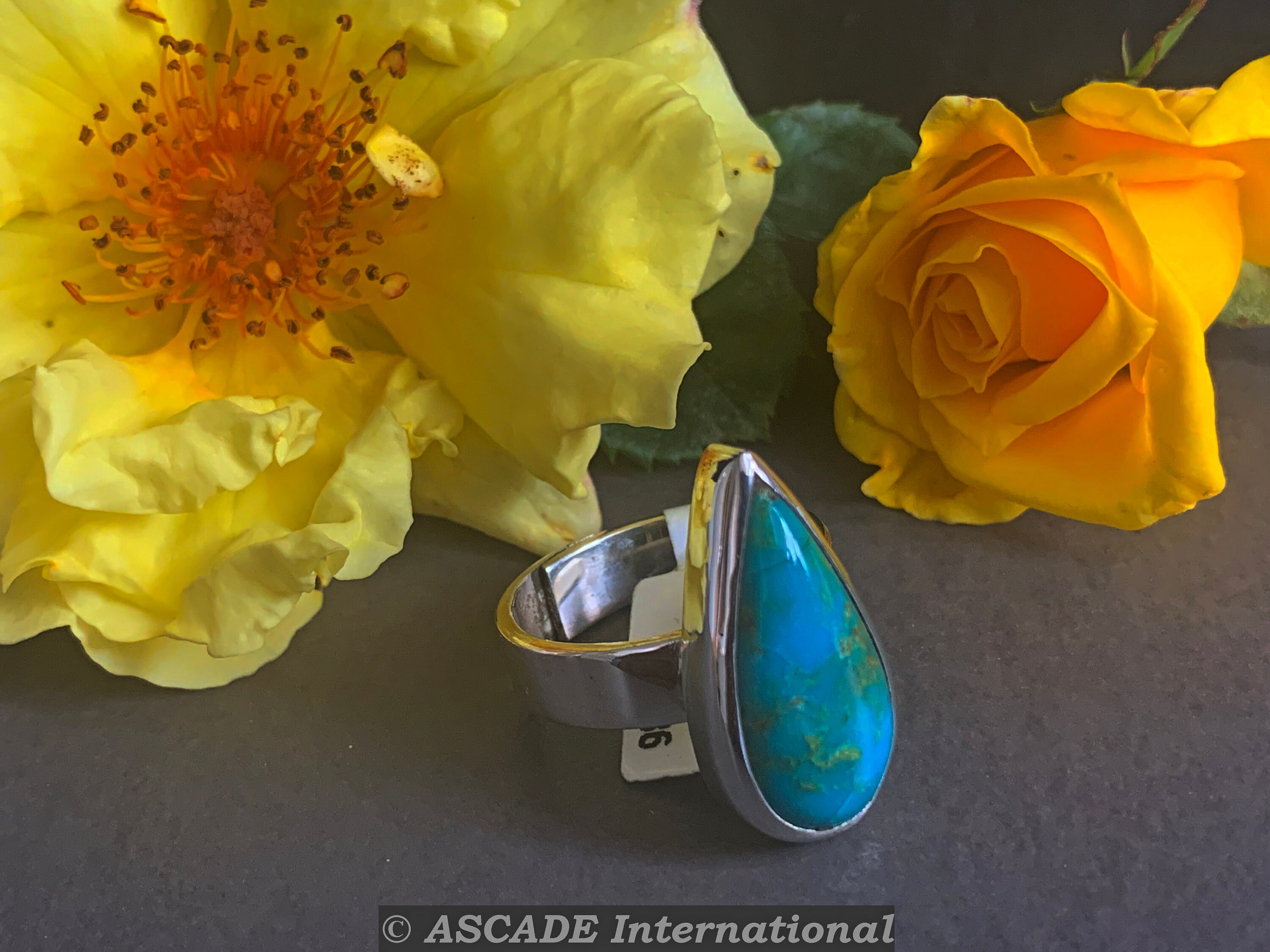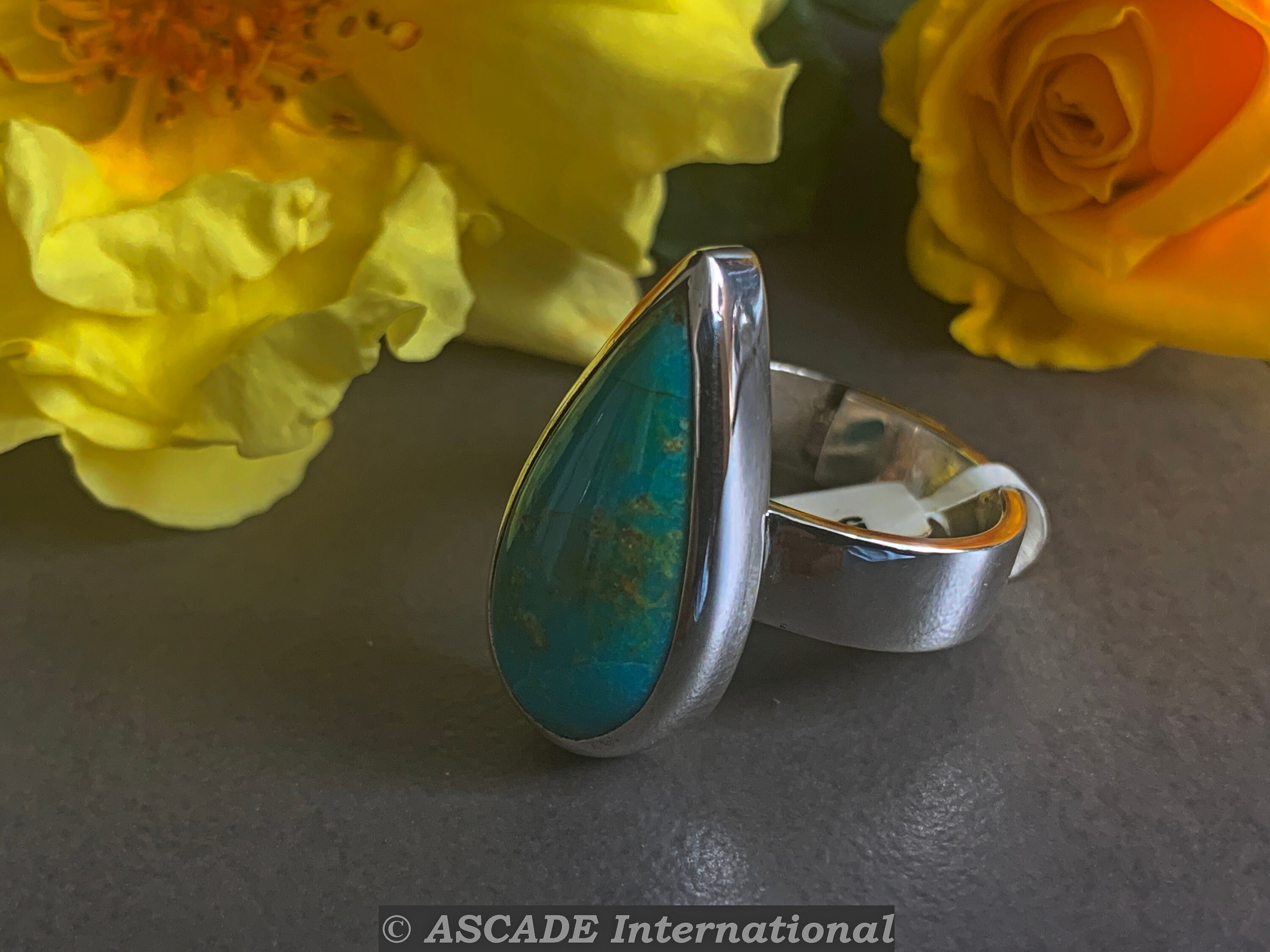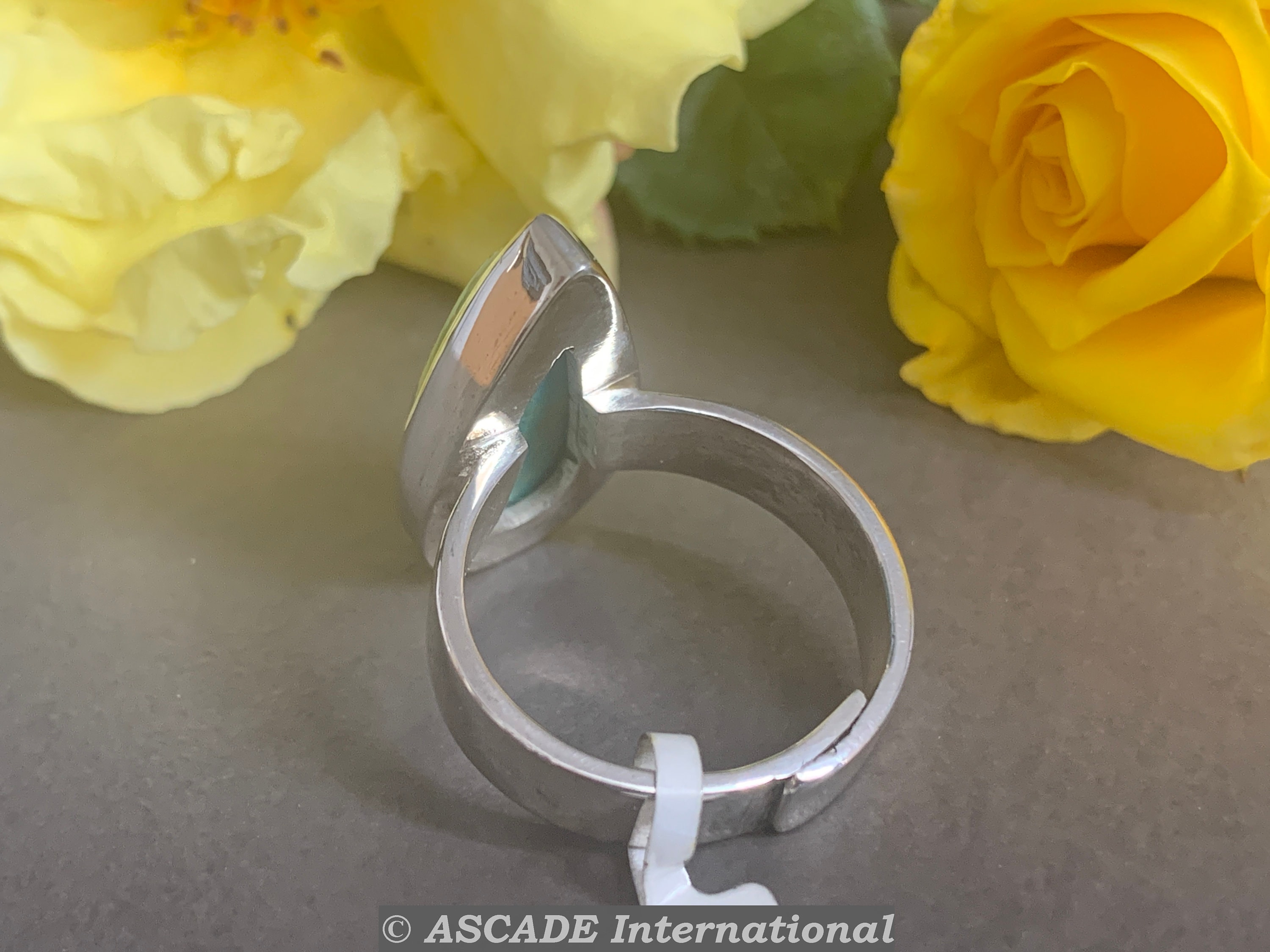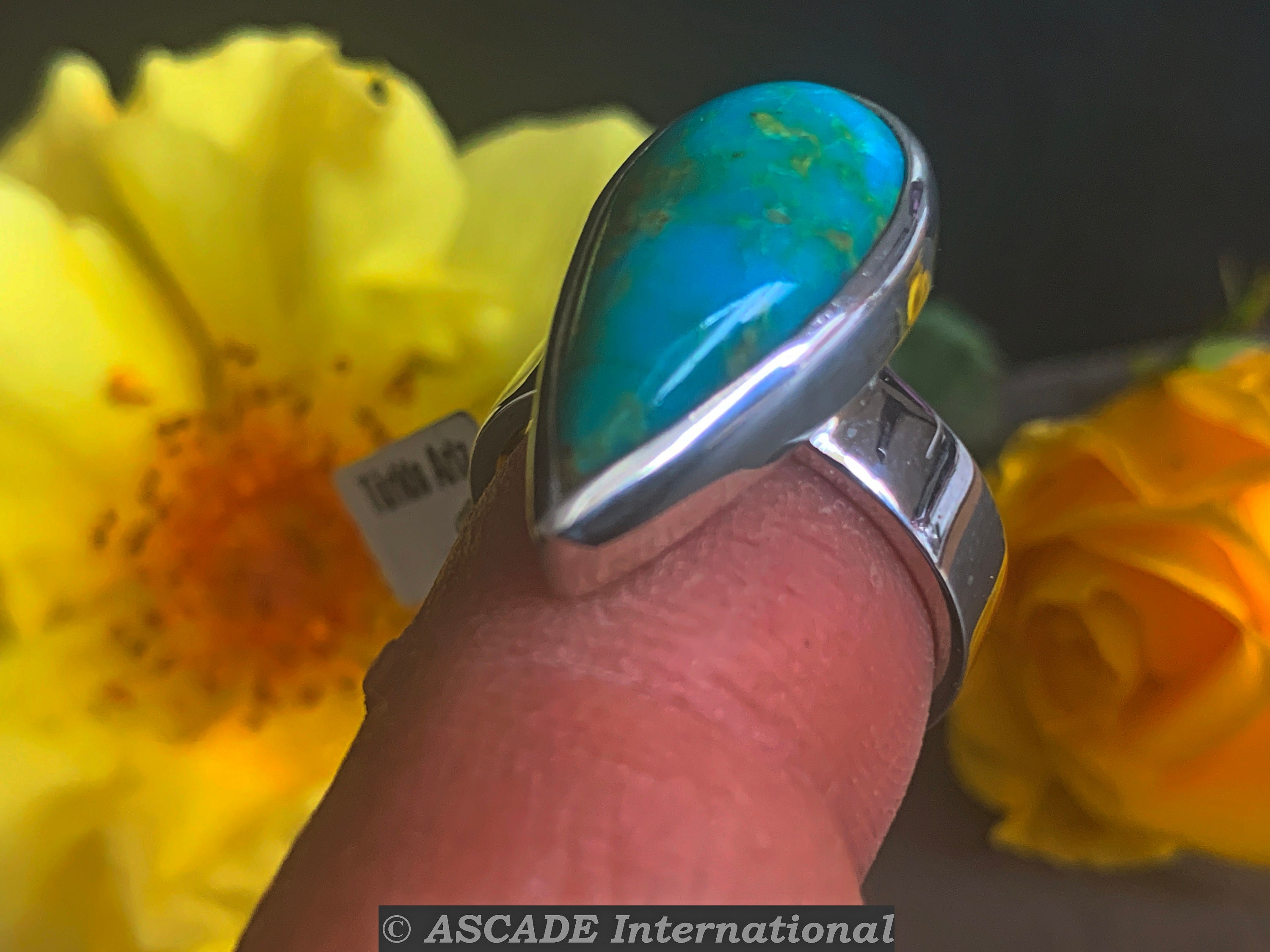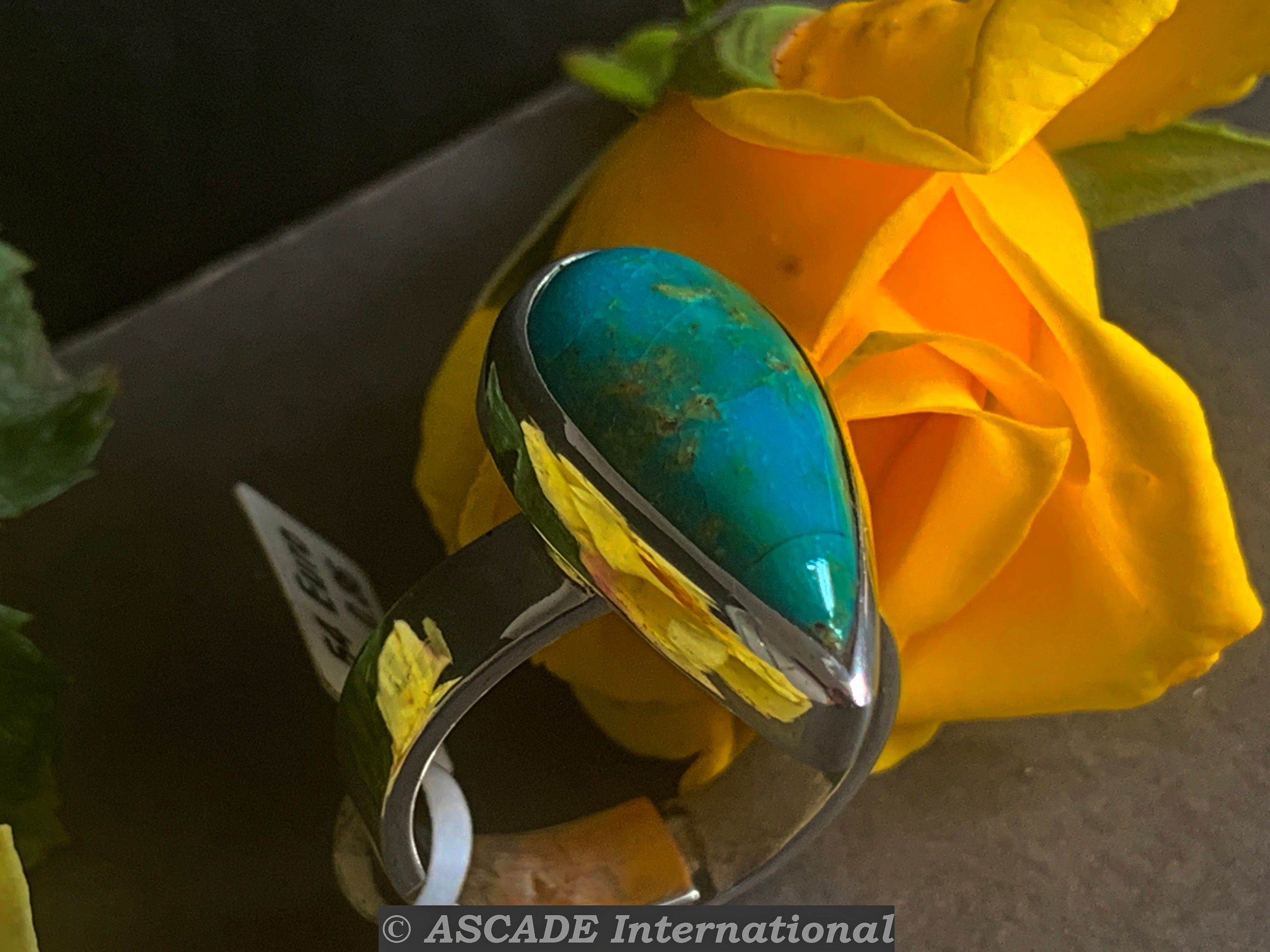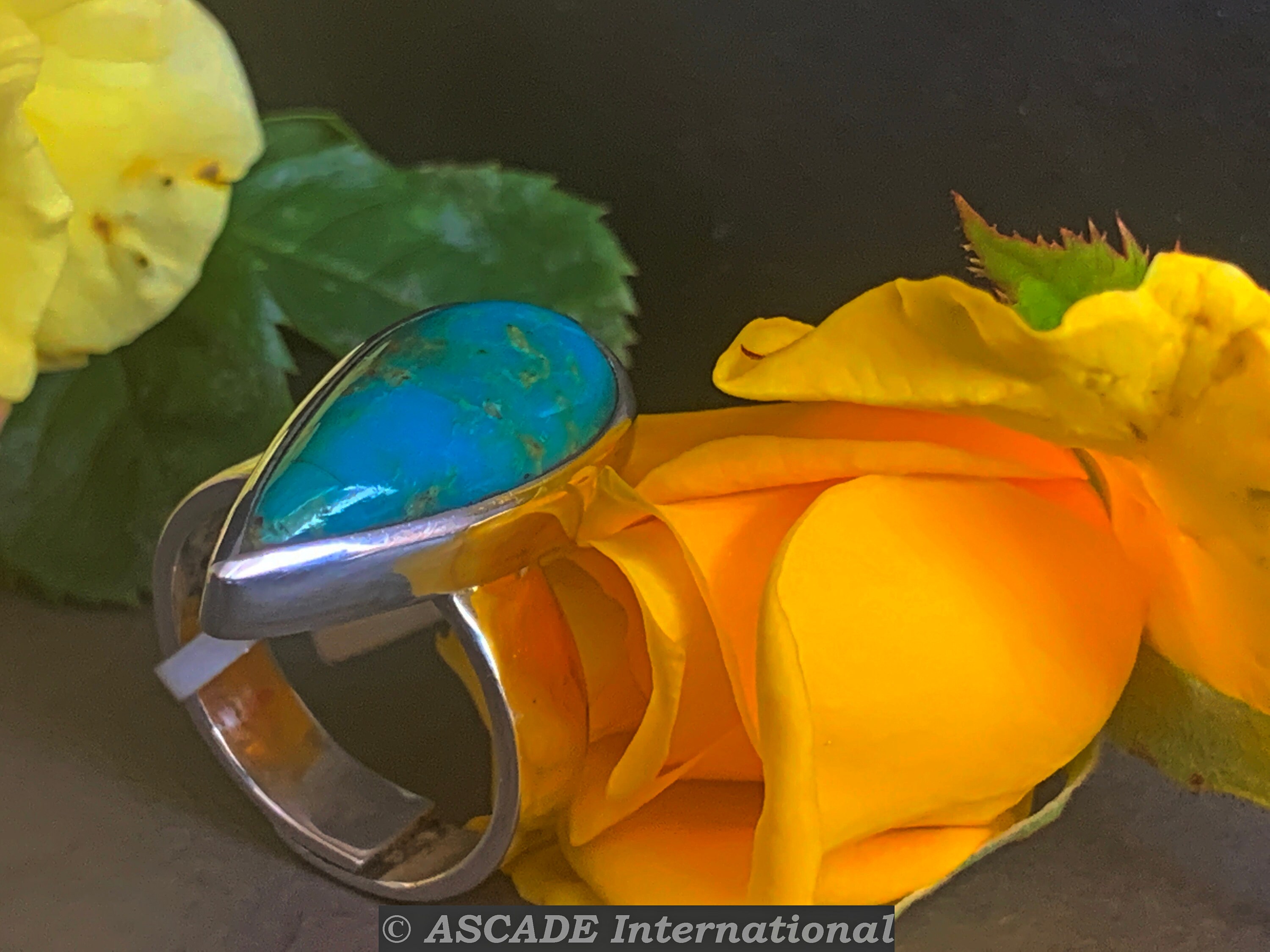Real turquoise ring silver (925) sterling
Meaning of turquoise
The blue-green turquoise was first known in Europe through the crusaders.
It got its name via detours or thanks to a misunderstanding - in the 15th century the French referred to it as pierre turquoise, "Turkish stone", although it was only imported into Turkey itself, mostly from Persia and resold from there.
Its outdated designation “Kallait” goes back to the Greek “Kallainos” and means “shimmering blue and green”. Pliny the Elder already mentioned it in his work "Naturalis historia". It was called the Turkish stone. Particularly beautiful turquoises were found in Arizona, where it is still a sacred stone for the Indians to this day. In ancient Egypt and Greece, too, turquoise was seen as a protective stone, which should warn of coming dangers by means of discoloration. The Indians also consider him the sten of the rider. But it was also used as a grave object and for the production of art objects. Hildegard von Bingen recognized its healing effects early on and counted it among her twelve main stones.
The turquoise is one of the most important healing stones. It is the rider's stone that the Indians so revered.
Effect turquoise
Turquoise should offer protection because it can warn of coming dangers. It helps to be more successful because it strengthens self-confidence, improves communication skills and promotes energy and assertiveness. But turquoise also helps with depression. This healing stone gives you the power to protect yourself and can be withdrawn and recovered from strains or influences from the environment. It provides the necessary knowledge that everyone is responsible for their own fate and processes past causes. In this way he balances the mind, brings you back to other thoughts and gives the life force to cope with your own life.
This turquoise comes from Arizona.
